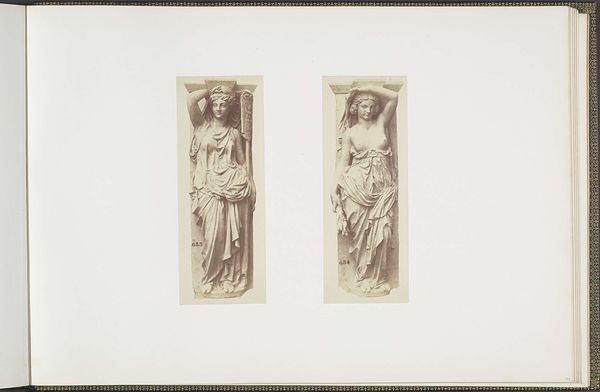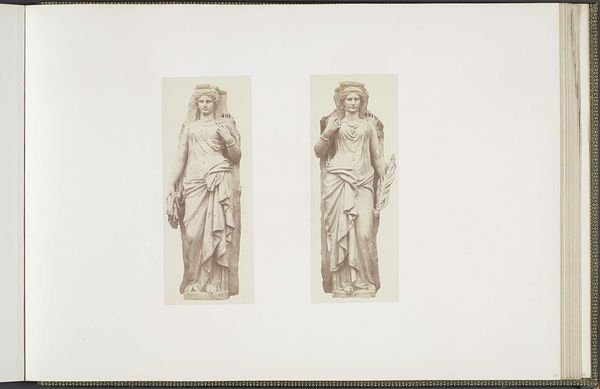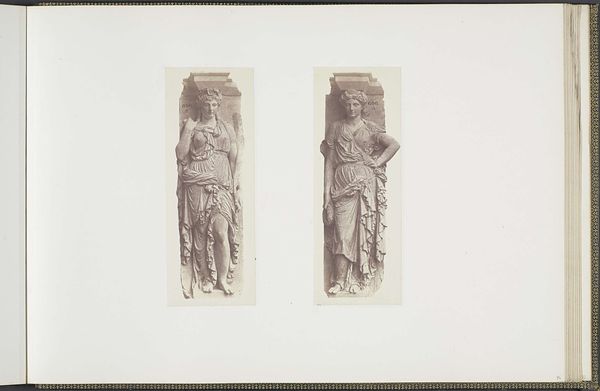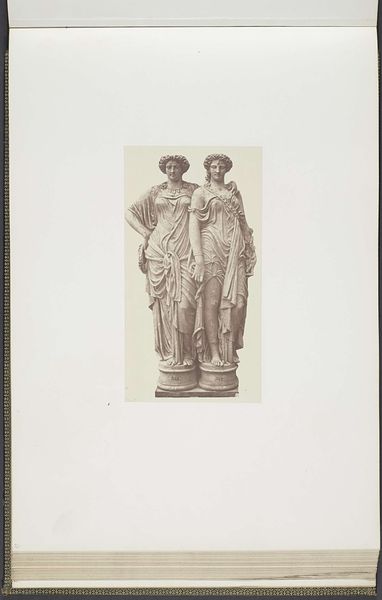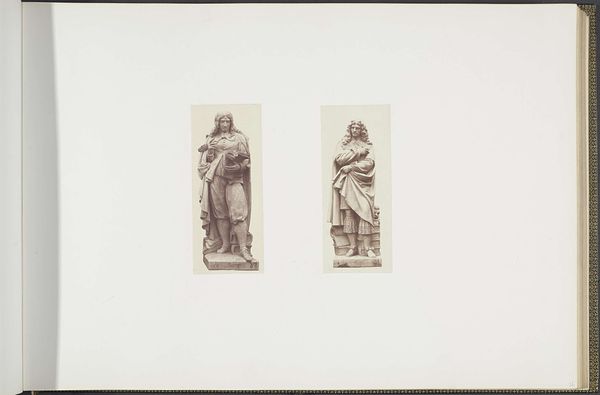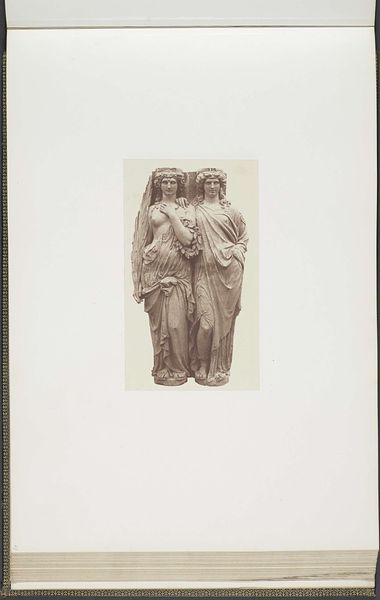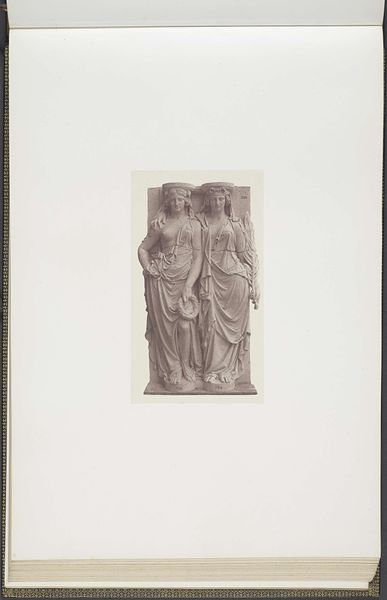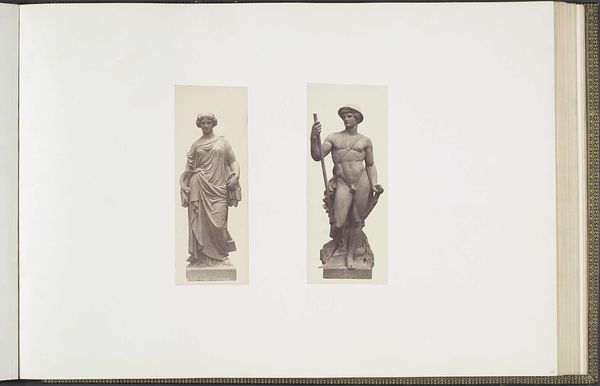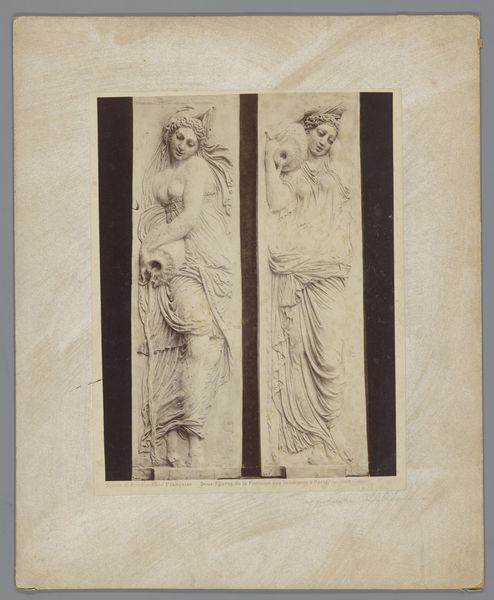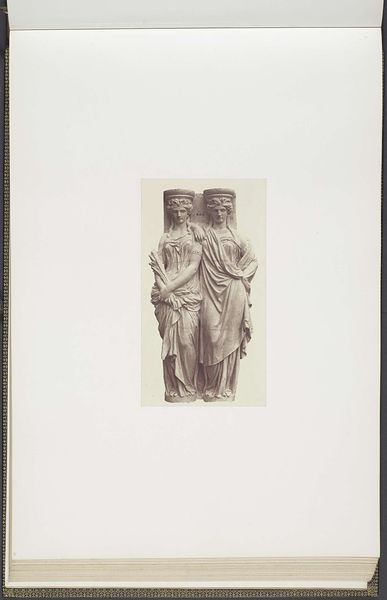
Gipsmodellen voor kariatiden op het Palais du Louvre door Eugène Guillaume c. 1857
0:00
0:00
photography
#
portrait
#
classical-realism
#
photography
#
history-painting
Dimensions: height 378 mm, width 556 mm
Copyright: Rijks Museum: Open Domain
Curator: Here we have a photograph by Edouard Baldus, around 1857, entitled "Gipsmodellen voor kariatiden op het Palais du Louvre door Eugène Guillaume" or "Plaster Models for Caryatids on the Palais du Louvre by Eugène Guillaume." Editor: They have this haunting beauty, draped in flowing robes. They seem incredibly serene. Almost impossibly graceful… given they're meant to be holding up… well, everything! Curator: Indeed. This is a photograph of plaster models for caryatids intended for architectural support. Baldus meticulously documented architectural projects in France. His photography becomes not just a document but a study in material culture, showcasing the transition from artistic concept to architectural element. It asks us, who produced these caryatids, what labour, what level of social skill? Editor: Looking at them closely like this, separated from the Louvre itself, I imagine they’re muses, spirits of the place captured for a fleeting moment before they fully manifest as architecture. Did Baldus see that? Did he choose this muted palette on purpose to underscore their ethereality? Curator: His technique focused on detail and scale. It's less about aesthetic and more about systematically capturing these models to record and perhaps even standardize them for efficient architectural application. The very scale allows others involved in the project to assess what they’re using, and replicate it for profit and functionality. It shifts how one understands artistic labour at that time. Editor: So, he's creating, or anticipating, some sort of architectural manufacturing process… it kills me a bit but you’ve certainly made me think more about this photograph not as some relic, or ghost captured on paper, but as a critical step of large scale commercial artistry of architecture… Curator: Precisely. And through that reframing, perhaps, we can recognize some hidden aesthetic even amidst standardization!
Comments
No comments
Be the first to comment and join the conversation on the ultimate creative platform.


